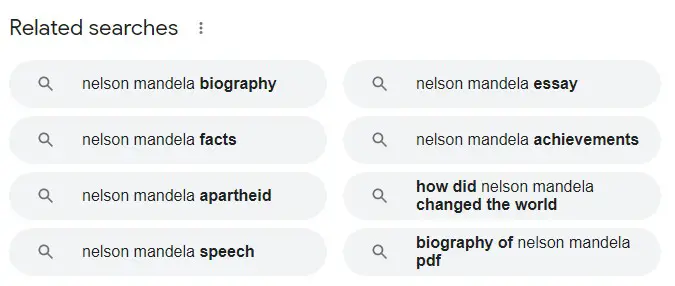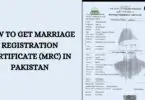Content rich with ideas and information on the internet serves no purpose if it is not optimized. Without proper SEO, that content would not reach its targetted audience. For that, the content must be search engine optimized. So, here we will teach you some best strategies to optimize the content for SEO.
Search Engine Optimization is primarily of two types – i.e on-page SEO & off-page SEO.
In this write-up, we will focus on on-page SEO strategies to optimize the content for Search Engines. Without a doubt, on-page SEO plays a major part in Google ranking.
So, let’s learn some effective ways to optimize your content better for Google and other search engines.
Strategies to Optimize the Content for SEO (Search Engine Optimization)
To optimize our content, we need to take care of multiple things. For clarity and better understanding, we will discuss them under separate headings.
1) Right Placement of the Keyword in the Content
What is a keyword? A keyword is a word or phrase that we type in search engines’ search bars like Google to find relevant content.

For example, if you want to read the biography of Nelson Mandela, you would type “biography of Nelson Mandela” or “Nelson Mandela Biography” in the search bar. In the search results, all the relevant articles and blog posts would appear to you.
This was just an example to elaborate on the concept of a keyword in SEO. Google picked all the relevant posts and displayed them in the results.
Search engines only pick the posts that they deem as the most relevant to the keyword.
Therefore, it is mandatory for the publisher to place the keywords in the right spots during the content writing so that the chances of that article appearing in the search increase.
Let us now understand where should we place the keyword in our content.
i) Keyword must appear once in the First Paragraph
It is super important that we include our focus keyword in the first paragraph of the article. You can add the keyword anywhere in the first paragraph – in the beginning, in the middle, or in the last sentence.
ii) Add the Keyword in the Headings/Sub-headings
For better optimization of the content, around 50 to 60 percent of headings/sub-headings in the content must reflect the keyword.
Please avoid keyword stuffing in all the headings. That means, do not add the keyword in all the headings.
iii) Keyword Density
What should be the keyword density in the whole content for better SEO? This is a very important question.
It is recommended by SEO experts that the keyword density should be limited to 1 – 2 percent. That simply means if you are to write a 100 words article, you should include your keyword only once or twice (not more than that).
Adding more keywords than the recommended limit simply becomes keyword stuffing. Search engines like Google strongly disapprove of such content.
You can also use synonyms – or words similar in meaning – in the content – if not the exact keyword. Google is smart enough to understand the intent.
iv) Add the keyword in the URL/Slug
URL is simply the specific link for some specific website page or post. Slug is part of that link that the publisher can edit while publishing the post.
Let’s suppose, we have a URL: https://www.scholarlywriteups.com/xyz123abc – the part of the link after the last forward slash i.e xyz123abc is called slug that we can edit.
Do not forget to add your keyword in the slug for better SEO.
v) Add the keyword in the Meta Description
Lastly, we must add our keyword in the Meta Description to optimize our content for SEO. A meta description is a short description of the article or text snippets that appear in the Google search result.
Almost all the platforms – i.e. Blogger, WordPress, etc – provide us Meta Description box to write it manually.
vi) Include the Keyword in the Image Alt-Text
Some platforms like WordPress provide us the option of adding image Alt-text. We must add our keyword there.
The image Alt-text is specifically for Google crawlers as they cannot see the image. They would only understand the image with the help of the Alt-text provided.
So, tell the crawlers what your content is about. Moreover, rename the uploaded (featured or other) images with the actual or similar keyword.
2) Use Primary as well as Secondary Keywords in the Content
The primary keyword is the main or focused keyword. While secondary keywords are the related searches that people do.
Let us continue with our example of the search “Biography of Nelson Mandela”. To find out the secondary keywords, you can scroll down to the bottom of the search results.

You can now see what people are searching for that is related to the biography. So, you should also include or talk about these searches in your main content.
These ideas will enrich as well as better optimize your content for SEO.
3) Sentences & Paragraphs must be Short for better SEO
The second most important area for SEO optimization of the content is the length of the sentences and paragraphs. (Ironically, I noticed I have nearly transcended the limit here)
What is the ideal length of sentences for better SEO? Well, Yoast recommends keeping sentence length below 20 words.
Try to keep your sentences as well as paragraphs shorter. It not only improves readability but also enhances the chances of getting ranked higher.
Google likes short length of sentences and paragraphs. Be as much laconic as possible in delivering your ideas in the content.
4) Use Active Voice Sentences
For better search engine optimization of the content, always use active voice sentences. The ideal ratio of active and passive voice sentences for SEO is circa 80:20.
That means, 80 percent of your article must be in active voice. In short, try to write the sentences in an active voice.
However, if required you can write in passive voice – but keep it as much less as possible.
5) Make Headings for Improved SEO Optimization
More headings mean better optimization because headings improve readability and understanding.
Keep the content under one heading restricted to less than 300 words. Try not to exceed this limit in a single heading.
Make headings and sub-headings to rank faster and higher.
6) Additional Add-ons in the Content for Better SEO
Make sure to add images, infographics, tables, charts, etc. to make it well-optimized for search engines. Google likes such add-ons in the article.
These add-ons not only make content appealing to the readers but also to Google crawlers. Hence, it improves the chances that your content will rank better.
7) Ideal Length of the Article for SEO
There is no fixed ideal length for search engine optimization (SEO). Rather it varies from content to content.
You just need to focus on the provision of all the ideas and information related to the keyword or topic. Make sure to answer all the questions that could arise in the minds of the readers.
Moreover, you must analyze the content of the other top-ranked blog posts. Do not omit any idea or heading that others have discussed in their content.
Enrich your article with better use of headings and other add-on devices (as discussed above).
In short, for some topics, 300 words may suffice and for others, even 3000 might be less. It all depends on the topic.
8) Internal and External Link Building
Link-building is also essential for SEO. In blogging, links are of two types – internal or outbound (external) links.
As the names indicate, internal links are the links that link pages or posts within the same website. Similarly, external links or outbound links link our page to some external website page or blog post.
Both types of link-building are mandatory for better SEO.
Internal linking helps Google crawlers to crawl more pages. Moreover, it directs visitors or traffic from one page to another within our website.
While external-linking provides credibility to your blog post when you link it with some high authority source. Google begins to trust your content and rank it higher.
Wrapping Up
There are always multiple things that we need to focus on for better SEO optimization of the content. However, the above-discussed areas are the most crucial to writing a blog post.
Moreover, if you are a webmaster, you must use an SEO plugin. The plugins give recommendations for improvement. Following those recommendations also significantly improves your own understanding of SEO.
You May Also Like:







Leave a Comment